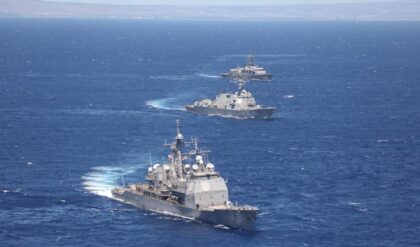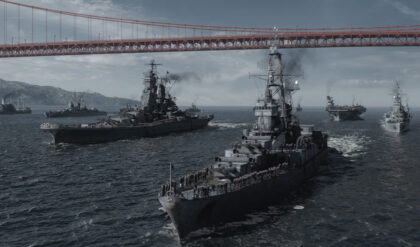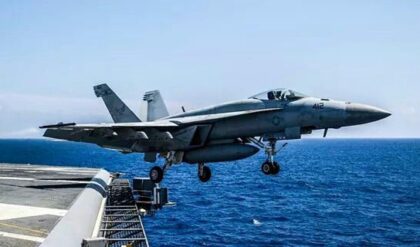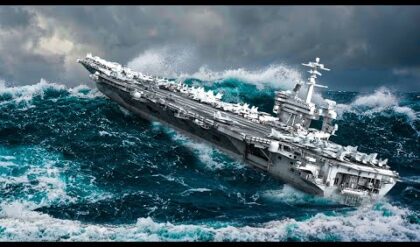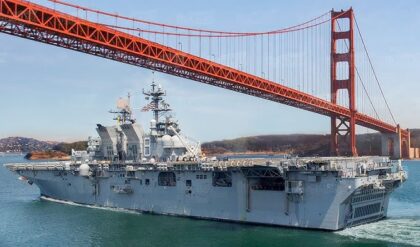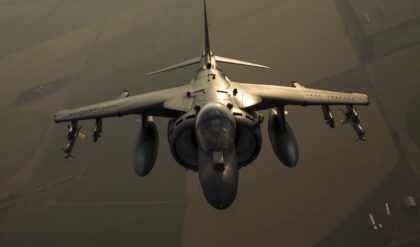While refit work on Russia’s aging aircraft carrier seems to have slowed, its two new amphibious assault ships are set to grow even bigger.

www.twz.com
The latest photos of the Russian Navy’s sole aircraft carrier, the Admiral Kuznetsov, currently undergoing a prolonged refit, suggest that work on the warship has more or less stopped in the last 12 months.
At the same time, Russian media reports indicate that the two new amphibious assault ships under construction for the country’s navy will be even bigger than previously thought.
Ultimately, these new warships would provide the Russian Navy with a much more flexible, affordable, and useful alternative to the Admiral Kuznetsov, even though it’s unlikely they will ever embark fixed-wing manned aircraft.
Above all that, eliminating the trouble-plagued Kuznetsov once and for all would free up funding that would allow Russia to make its amphibious ships everything they possibly can be.
The Center for Analysis of Strategy and Technologies, or CAST, a Moscow-based defense think-tank has analyzed recently published photos of the Admiral Kuznetsov during its refit and concluded that “there has been no particular work done on the ship in the last year.”
The images, which show the snow-covered carrier’s island superstructure surrounded with scaffolding and no apparent workers on the ship itself, were originally posted to Instagram earlier this month by user Lana Sator, but it is unclear exactly when they were taken. The photos can be seen further below in this article.
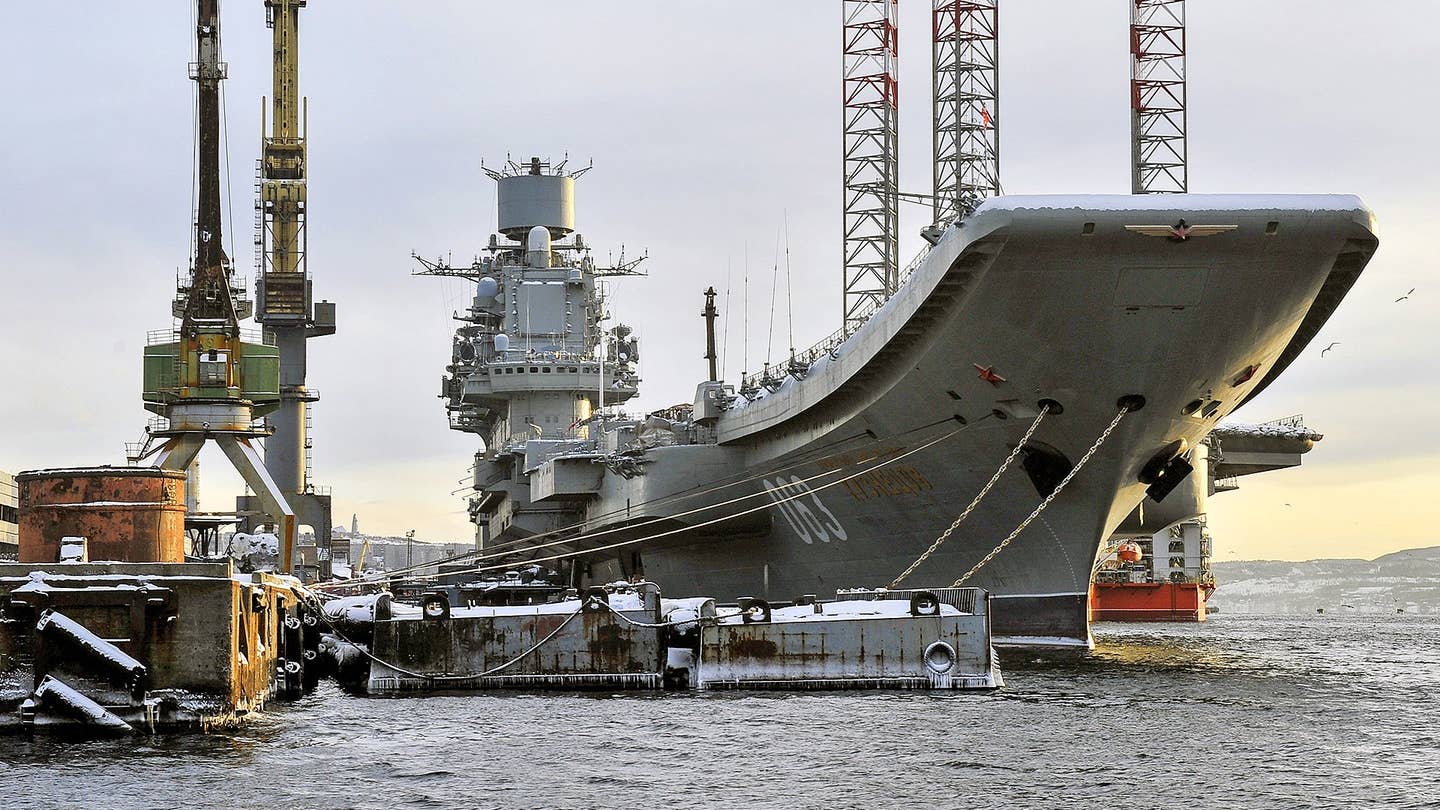
The Admiral Kuznetsov alongside the dock in Murmansk., LEV FEDOSEYEV/TASS/GETTY IMAGES
The Admiral Kuznetsov has been docked at the Zvezdochka ship repair yard in Murmansk, on the Barents Sea in Russia’s far northwest, ever since concluding its last combat deployment to the eastern Mediterranean, which began in late 2016 and ended the following year.
This was the first time the aircraft carrier had taken part in an active conflict, sailing to the Mediterranean to participate in the campaign over Syria. One MiG-29KR Fulcrum, as well as a Su-33 Flanker, from its air wing were lost in the process due to accidents.
The carrier arrived in Murmansk for refit in early 2017, being buzzed en route by British Royal Air Force Typhoon fighter jets. Soon after its arrival at the shipyard, and as The War Zone
reported, there were indications that the scope of the work was being dramatically reduced, throwing the fate of the warship into question.
Nevertheless, the carrier was expected to receive upgrades to its powerplant and electronics equipment that would extend its service life by another 25 years.
However, the project has run anything but smoothly since then. A floating dry dock containing the ship sank in October 2018, resulting in a crane smashing into the warship’s deck and causing significant damage. Then, in December 2019, a serious fire broke out on board the vessel, which you can read about here.
The refit for the Admiral Kuznetsov had originally been anticipated for completion in 2021, but, as of last December, a source quoted in a report from Russia’s state-run TASS news agency said the vessel was due to return to sea for trials in 2022.
It could very well be that work has been stalled ever since the loss of the dry dock, which was Russia’s largest and the only one big enough to accommodate the carrier.
The state-owned United Shipbuilding Corporation, or USC, admitted back in September 2018 that it was looking into alternatives for servicing the flattop, but that those substitutes could be months, if not years away from becoming operational.
Still, there has been no official indication that work on returning the Admiral Kuznetsov to service has been abandoned entirely.
It is nonetheless interesting to note that the new Project 23900 amphibious assault ships now being built for the Russian Navy will reportedly displace around 44,000 tons, according to a senior defense ministry official. In comparison, the standard displacement for the Admiral Kuznetsov is around 52,000 tons.
Confirmation of the Project 23900 class’s increase in size was provided by Russia’s Deputy Minister of Defense Alexei Krivoruchko, in a recent interview with Krasnaya Zvezda, the Russian military’s official news outlet, which is also known as the Central Organ of the Russian Ministry of Defense.
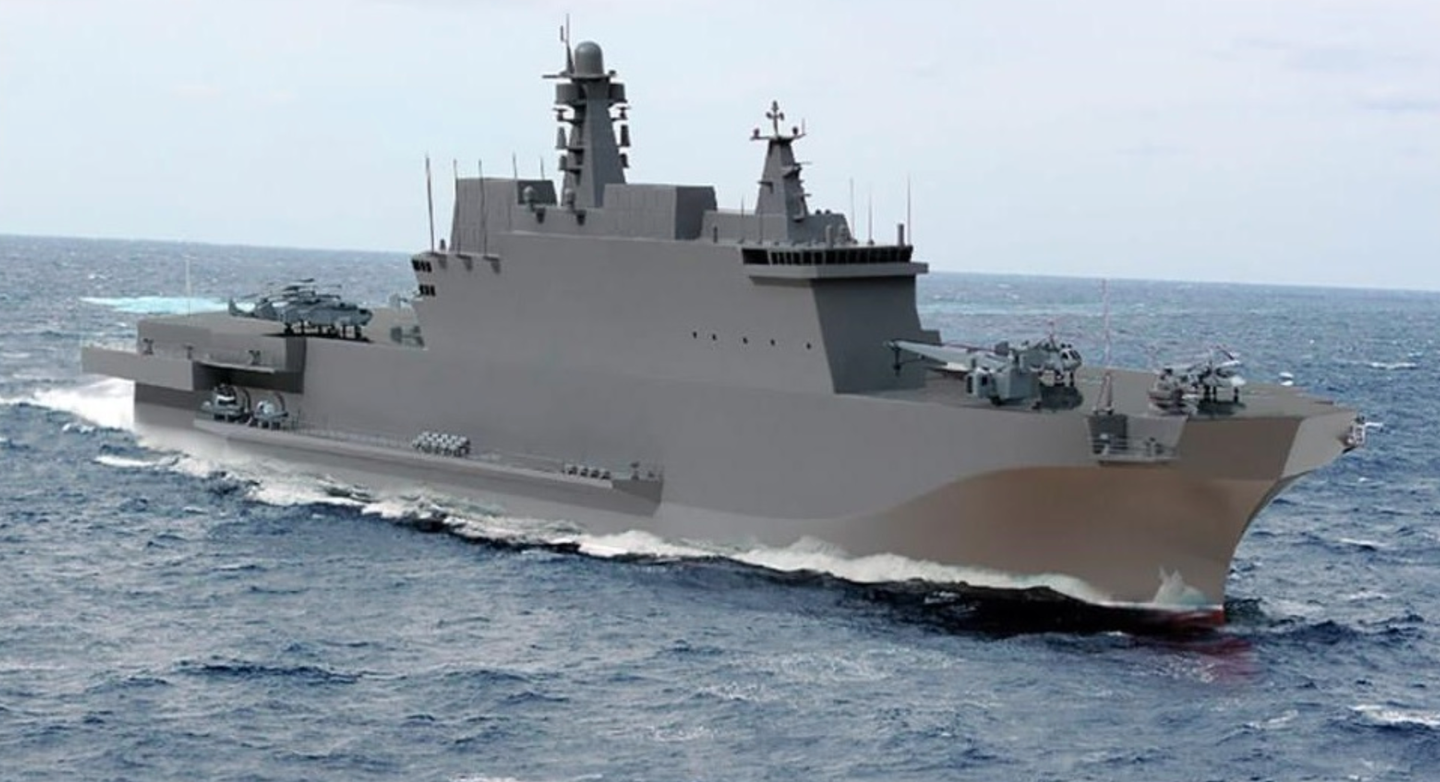
An official computer-generated artwork showing the Project 23900 ship, prior to its most recently reported increase in size., Russian Ministry of Defense
“Under the leadership of the President of the Russian Federation [Vladimir Putin], two universal landing ships have been laid down of a new design, displacement 40,000 [metric] tonnes each,” Krivoruchko said.
“Under current conditions for ensuring the pace of equipping the Russian Navy, implementation of a series of contracts is being carried out with the use of a mechanism for advance financing, in order to ensure delivery of the ships one to three years than the previously planned delivery time.”
As recently as last August, TASS was reporting that the two ships would displace at least 33,000 tons each. This figure was provided by an unnamed source in the shipbuilding industry. Before that, the vessels were expected to displace around 28,000 tons each, according to that same story.
While still smaller than the Admiral Kuznetsov, a figure of 44,000 tons would put the new amphibious assault ships firmly in the same category as the U.S. Navy’s Wasp class, which are capable of operating short takeoff and vertical landing (STOVL) fighter jets, but are not equipped for conventional carrier-based fixed-wing aircraft. Russia, of course, has no STOVL jets in its inventory, and its fleet of helicopters dedicated to amphibious operations is only very modest.
Back in 2017, Deputy Defense Minister Yury Borisov revealed that the Kremlin was in talks with the country’s aviation industry about a new STOVL fighter design, although there appears to have been little or no news of that program since and in the current acquisition environment it would seem a very unlikely candidate for funding.
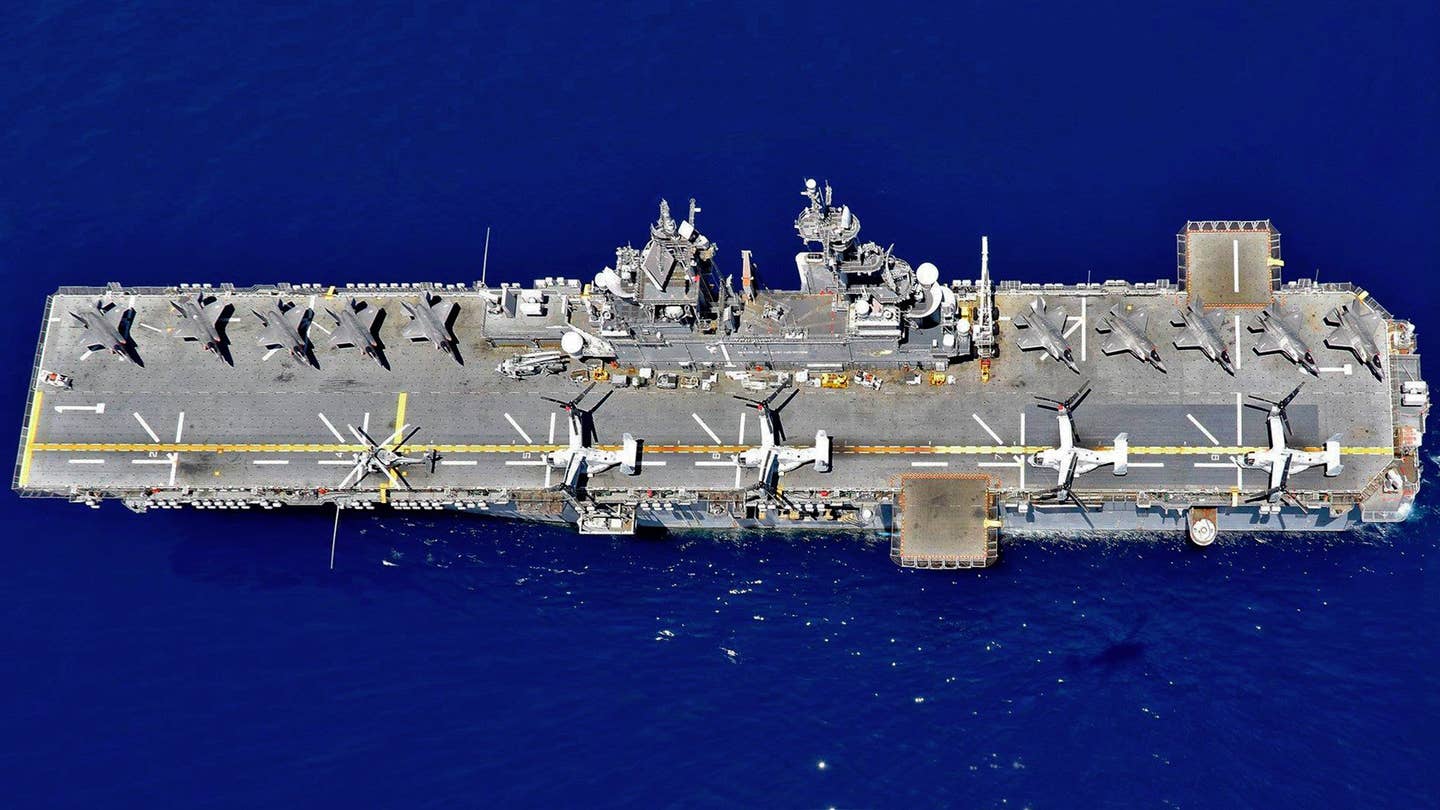
The U.S. Navy’s first-in-class amphibious assault ship USS Wasp in the Philippines carrying a U.S. Marine Corps contingent that includes at least 10 F-35B Joint Strike Fighters., U.S. Navy
Moreover, the new displacement would exceed that of the French Navy’s sole nuclear-powered carrier Charles de Gaulle, which has a displacement of around 42,000 tons fully loaded.
The Charles de Gaulle is equipped with catapults and arrestor gear to operate conventional fixed-wing aircraft, including Rafale M fighter jets, while the conventionally powered Admiral Kuznetsov is not fitted with steam catapults and instead uses a ‘ski-jump’ ramp over the bow for launching its fixed-wing aircraft.
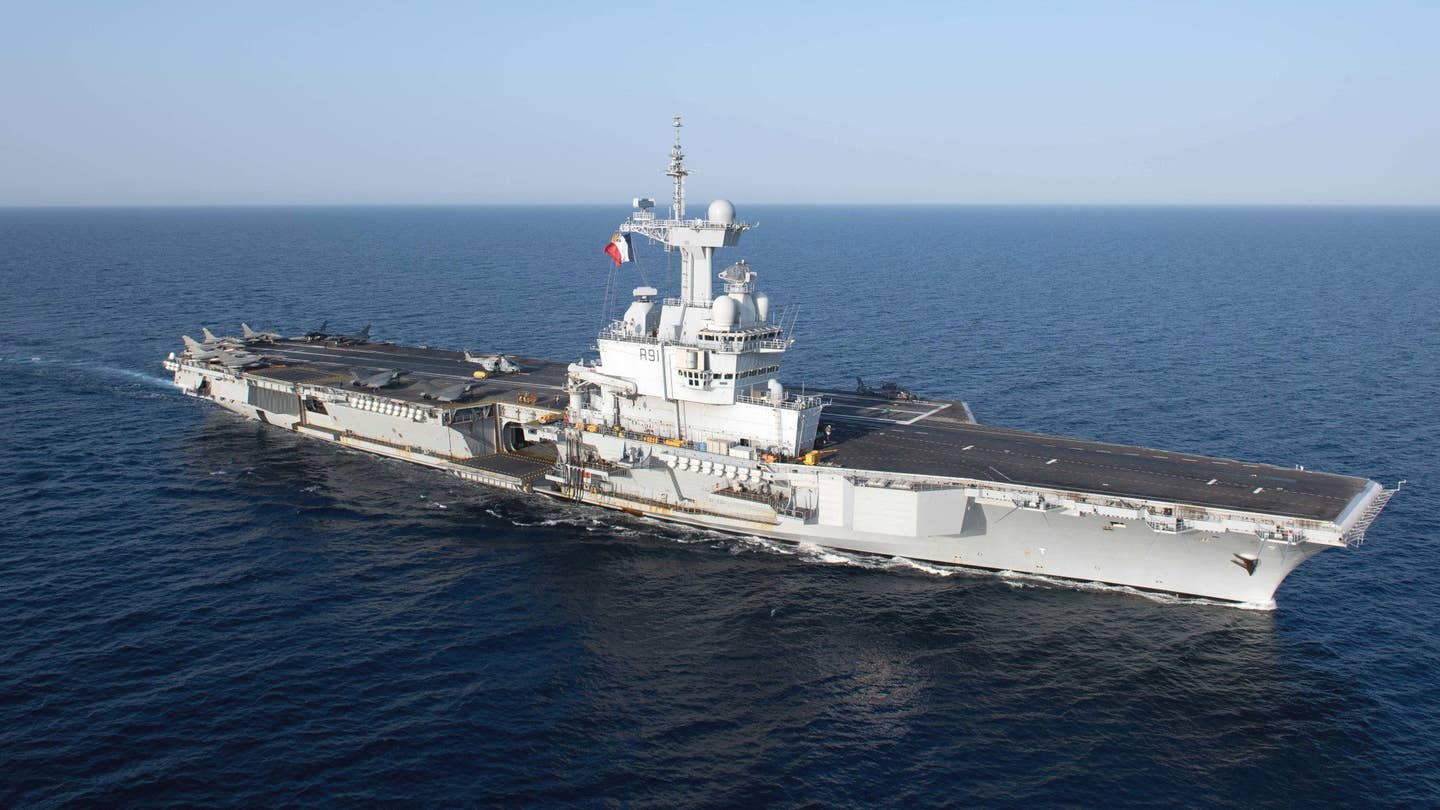
Current reports suggest the Project 23900 ships will have a greater displacement than the Charles de Gaulle — the only catapult-equipped aircraft carrier currently active outside the U.S. Navy., U.S. Navy
As yet, there appears to be no sign that the Project 23900 vessels are in any way planned to operate conventional fixed-wing aircraft, such as the MiG-29K and Su-33 that are included in the standard air wing of the Admiral Kuznetsov.
Furthermore, it is as yet unclear how the planned increase in size will affect the overall design and capabilities of the Project 23900 class and whether it could potentially translate into a much larger flight deck.
Equipping such a vessel with a takeoff ramp or catapults, plus angled deck would be a huge undertaking and the two ships are far more likely to be limited to the currently declared rotary-wing and drone types.
Previously, the design was reported as being around 720 feet long, compared to 860 feet for the Charles de Gaulle, and 1,000 feet for the Admiral Kuznetsov, but this was before the planned increase in displacement. There is also the lingering possibility that Russia might indeed develop a new STOVL fighter, but that would be an enormously expensive undertaking in order to equip just two assault ships.
These two vessels are intended to replace a pair of Mistral class amphibious assault ships that were to be built for Russia by a French consortium, their purchase being approved in 2010.
However, this contract was suspended following Russia’s annexation of Ukraine’s Crimea region in 2014, and the two ships were eventually sold to Egypt, instead. The Mistral class vessels have a displacement of around 23,700 tons, considerably smaller than what is now planned for their successors.
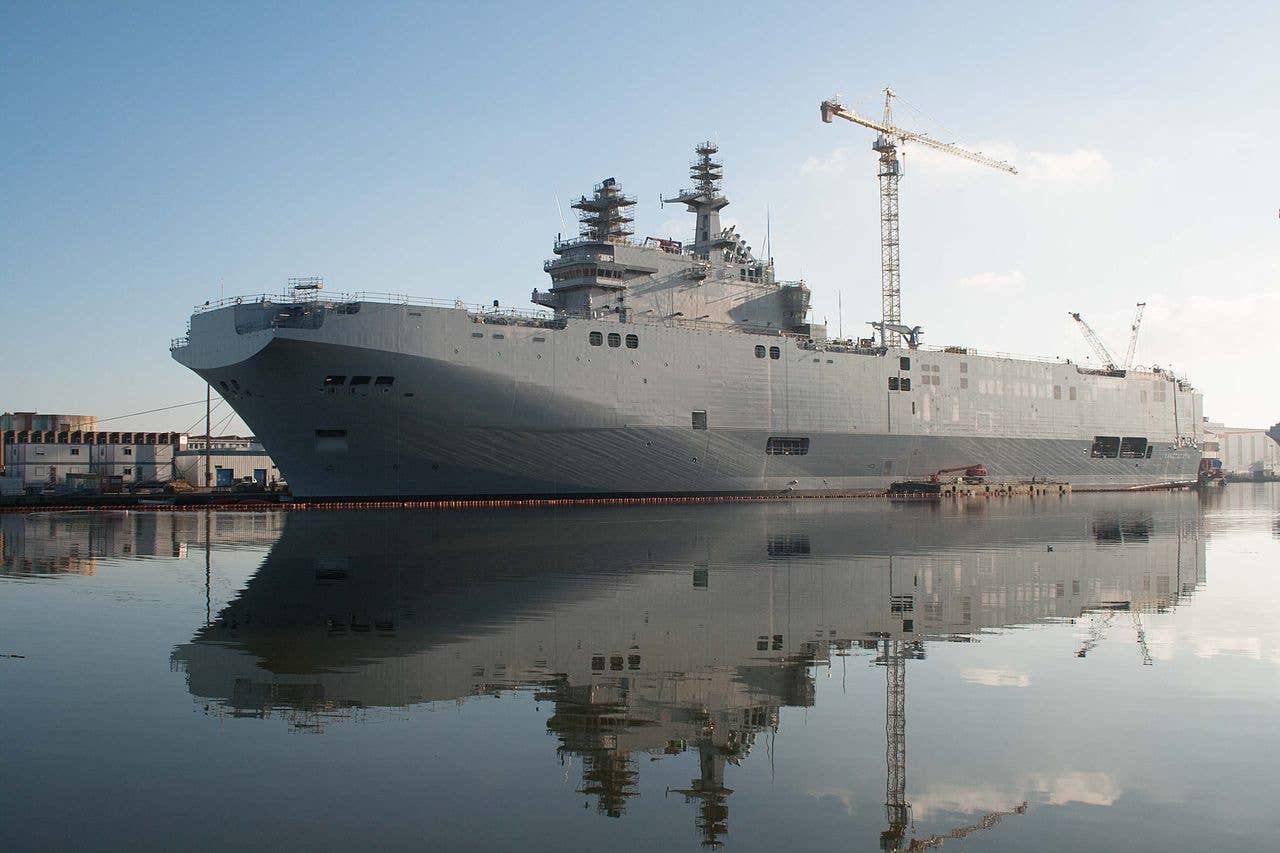
One of two Mistral class ships under construction for the Russian Navy in 2014., LUDOVIC PÉRON VIA WIKIMEDIA
A contract for the construction of the two Project 23900 warships was signed by the Russian Ministry of Defense in May 2020, valued at around $1.36 billion, with work taking place at the Zaliv shipyard in Kerch, a facility that has been in Russian hands since it took over Crimea.
That is a tiny amount of money for two amphibious assault ships of this size, but it could be just part of the acquisition cost. More so, it is very unlikely to include the vast array of mission systems these vessels would also require.
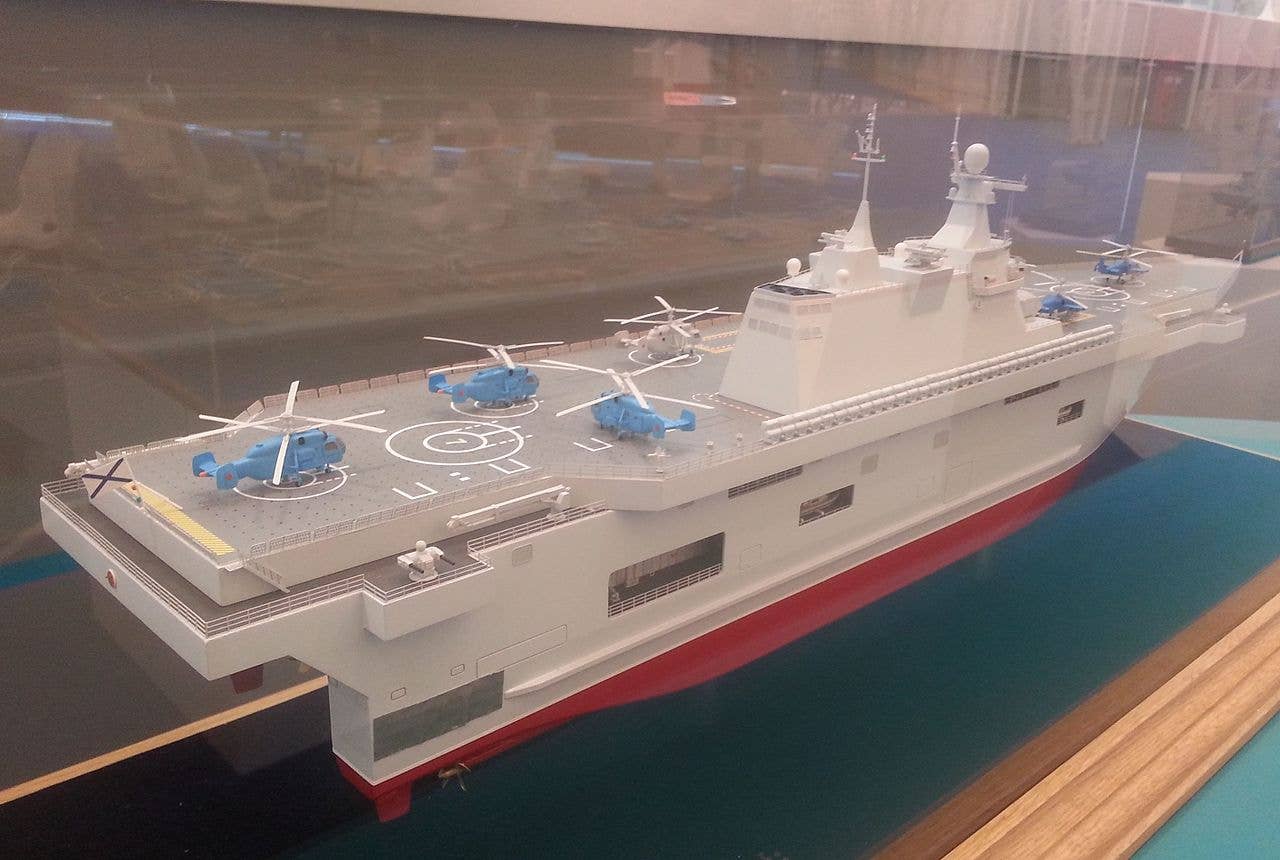
An early model of the Project 23900 amphibious assault ship, with Helix and Hokum helicopters arranged on deck., ARTEM TKACHENKO/WIKIMEDIA COMMONS
Both ships were laid down at Zaliv last June and have been named Ivan Rogov and Mitrofan Moskalenko. Russian media reports suggest that the ships are due to be handed over in 2025 and 2027.
Last summer, when the projected displacement was still 33,000 tons, the design of the vessels was reported as being able to carry 16 “heavy” helicopters, as well as unmanned aerial vehicles (UAVs).
In this instance, it seems “heavy” refers not to a true heavyweight rotorcraft like the enormous Mi-26 Halo, used by the Russian Aerospace Forces, but to rotorcraft in the class of the Ka-29 Helix assault helicopter.
This would also include the related Ka-31 airborne early warning and Ka-27 anti-submarine warfare/utility versions that have been routinely embarked on Soviet or Russian Navy warships in the past.
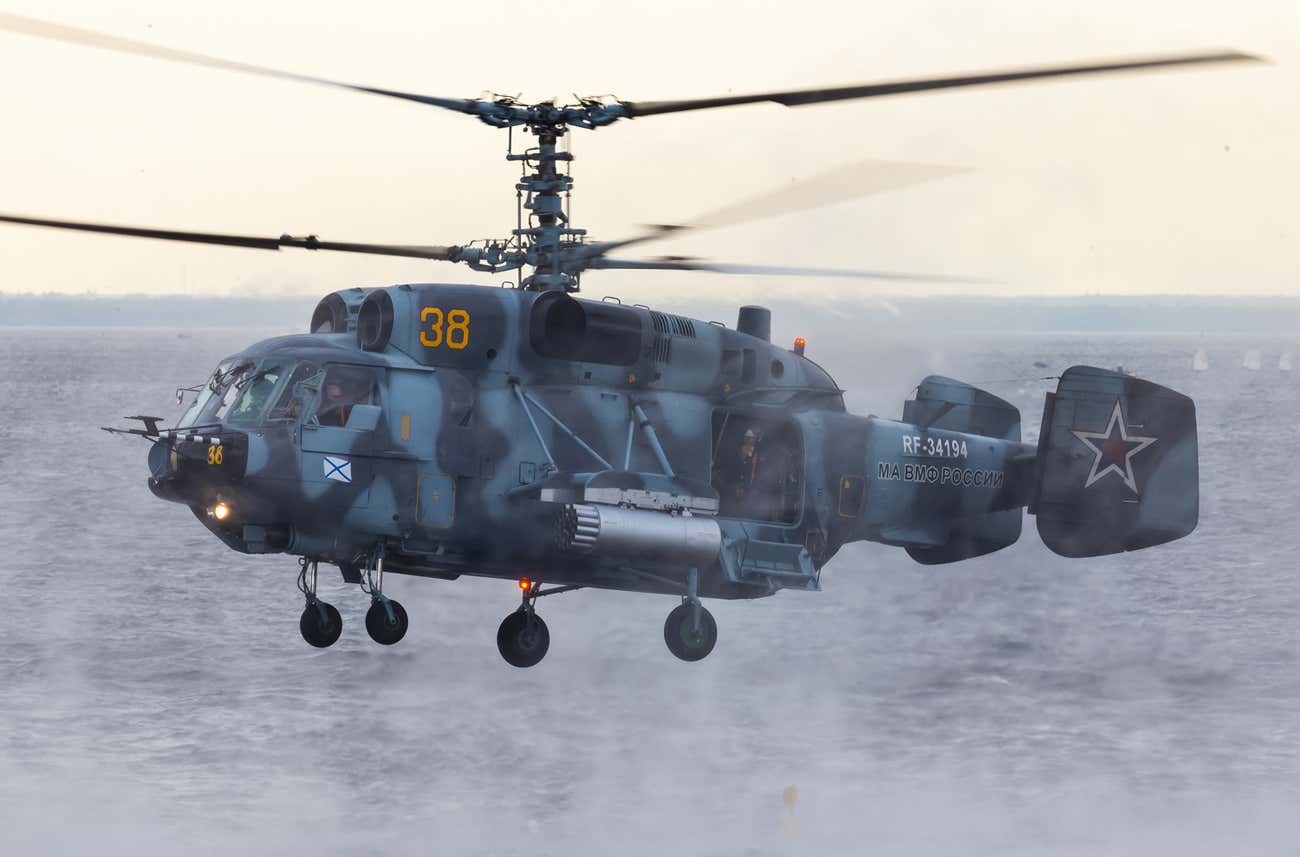
The Ka-29 is the primary amphibious assault helicopter in Russian Navy service, but only around a dozen are in use. , DMITRY RYAZANOV/WIKIMEDIA COMMONS
Other helicopters envisaged for the Project 23900 include the Ka-52K Katran, meaning spiny dogfish in Russian, a navalized version of the Ka-52 Hokum attack helicopter, which has already undergone ship trials aboard the Admiral Kuznetsov.
In addition to folding rotor blades and other features for shipboard operations, the Katran can carry the Kh-35 (AS-20 Kayak) subsonic anti-ship missile.
In its land-based form, the Ka-52 has also been operated aboard the Egyptian Navy’s Mistral class amphibious assault ships. Other non-marinized helicopters could also use the ships during temporary taskings.
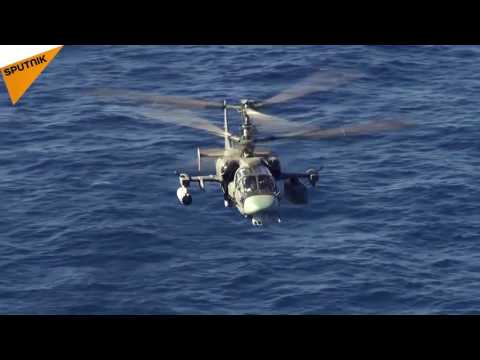
The types of drones to be embarked has not been revealed either, but a rotary-wing type is one option. In 2018, Russia revealed a rotary-wing UAV, confusingly also named Katran, during the Victory Day Parade in Moscow.
In terms of concept and capabilities, this drone appears to be similar to the Schiebel Camcopter S-100, an Austrian-made rotary-wing UAV that has been used aboard the French Navy’s Mistral class assault ships, and many other naval vessels.
Smaller unmanned fixed-wing aircraft could potentially be embarked on these ships, with a wider array possible if a light catapult were installed and some form of arresting recovery systems.
This is not for manned fighters, or anything similar, but for smaller drones that can expand the sensor reach of the ship and more.
Even aside from the problems that have befallen the Admiral Kuznetsov in the recent past, there is an argument to be made that two modern amphibious assault ships represent a much better use of resources than the single aircraft carrier, which is necessarily limited by its short takeoff but arrested recovery (STOBAR) flight operations.
Without a catapult to launch its aircraft, its aircraft can only operate with a reduced payload of weapons and/or fuel, which was likely the reason that the jets disembarked from the ship during the Syrian campaign to fly from Russia’s land base at Khmeimim in Latakia province.
You can read more about the land-based interlude for the Russian carrier air wing in this previous article.
Also, operating only a single aircraft carrier significantly reduces availability to the periods when it is not in regular refit.
For much of the time that it’s at sea, the carrier’s crew and embarked air wing will be engaged in routine training cycles, further limiting its ability to deploy on operations as and when required.
The less-than-stellar showing by the Admiral Kuznetsov during its sole combat cruise in the Mediterranean, where the carrier’s value was arguably largely symbolic — and which included the embarrassment of having to retrieve two fighter jets from the seafloor — may also have contributed to some disenchantment among the navy, and perhaps the wider Russian defense establishment.
Furthermore, the cost of operating a dedicated carrier aviation arm dominated by fighter jets, with various types unique to that service, is formidable, and eliminating it would free up a lot of funding. Russia’s financial situation alone could be enough to see the Admiral Kuznetsov, and its niche air wing scrapped.
Ultimately, an amphibious assault ship is potentially much more flexible, even without conventional fixed-wing airpower. The Project 23900 is expected to be able to embark six landing craft to transport around 75 armored vehicles, 900 troops, and support equipment to a beachhead during an amphibious operation, but the vessels would also be suitable for floating hospitals or as flagships for littoral operations.
With some modifications, or with a tailored air group onboard, these warships could also take on anti-submarine or mine warfare roles. In addition, time and again, amphibious vessels of this kind have also shown their worth in non-combat scenarios, including disaster relief and humanitarian assistance missions.
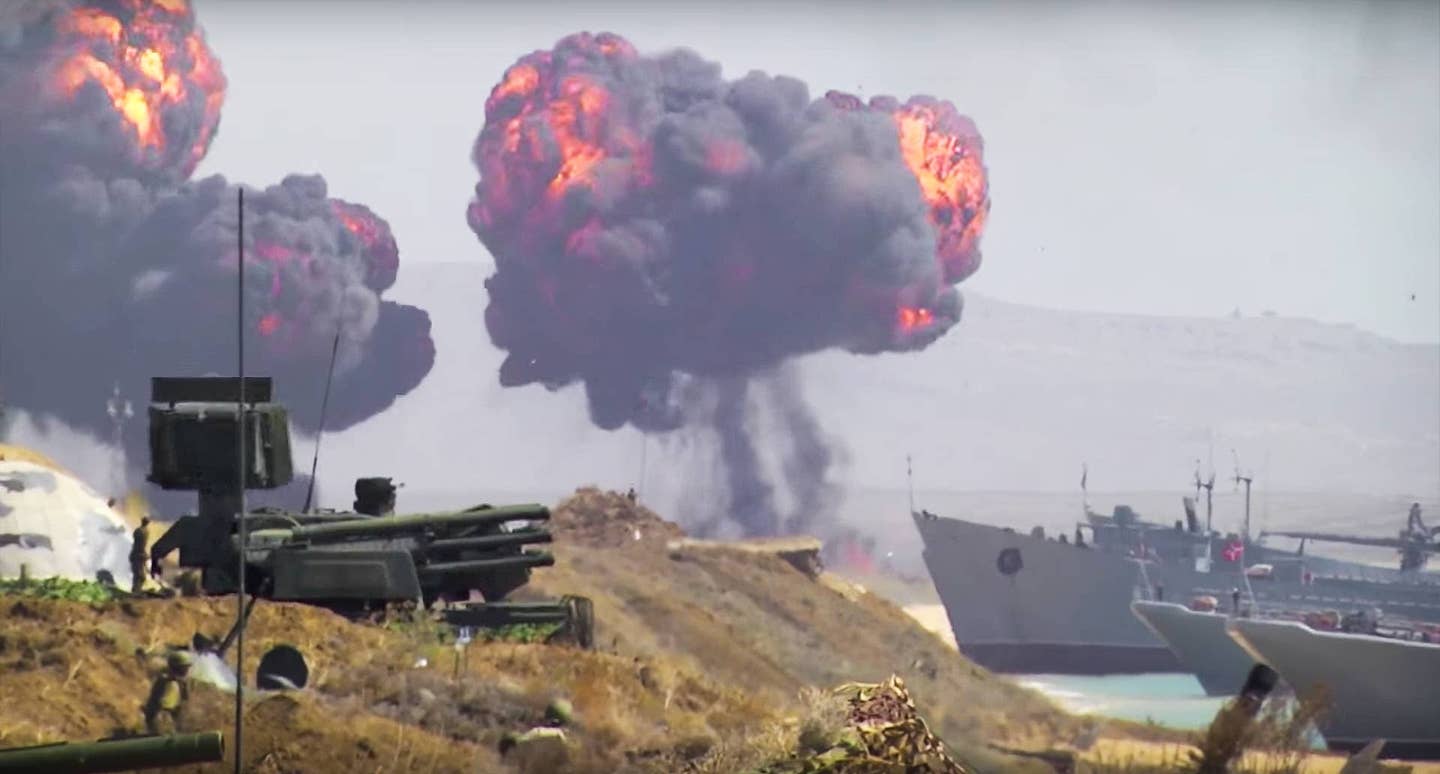
A Russian beach-landing exercise in 2016. The Project 23900s would provide a much more capable and survivable amphibious assault capability., YouTube Screencap
Russia’s experience in the annexation of Crimea may well have helped inform the ongoing design changes for the assault ships. It’s also likely that they will have a role in the kinds of Arctic operations that the Russian military is also increasingly focusing on.
Speaking to TASS last August, Renat Mistakhov, the head of the Ak Bars Shipbuilding Corporation that is the parent company of the Zaliv shipyard, said that, unlike the French-made Mistral ships, the Project 23900s would be capable of operating in the Arctic, “being led by an icebreaker.”
That said, the Project 23900 design would also have still relevance in a campaign like that in Syria, for example, its helicopters delivering special operations forces ashore, flying combat search and rescue missions, prosecuting anti-submarine or anti-shipping patrols, or even undertaking airstrikes in the vicinity of the shore.
In the meantime, it seems there is currently no appetite for a direct successor to the Admiral Kuznetsov, with reports back in 2017 indicating that planned work on new classes of nuclear-powered aircraft carriers and destroyers for the Russian Navy had been put on hold indefinitely, in favor of more urgent or important defense programs.
Overall, if properly funded, Russia’s new amphibious assault ships will provide a more valuable complement to its maritime capabilities long-term than the Cold War-design aircraft carrier.
Whatever their final size and aviation component, they will offer superior versatility across a wider set of missions.
Moreover, doing away with fixed-wing carrier aircraft would also allow funds to be invested in realizing the full potential of these two new warships.

